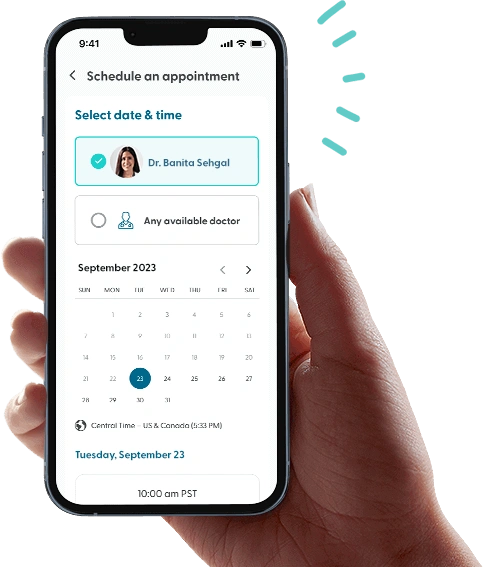The Causes, Symptoms, and Treatments for Tick-Borne Relapsing Fever

Tick-borne relapsing fever (TBRF) has been a recognized disease for centuries, with cases documented as far back as the late 19th century.
Before the advent of antibiotics, common treatments included using arsenic compounds and managing symptoms — far more dangerous than current therapies.
Fortunately, today advanced treatments are available for recurrent fevers caused by TBRF. In fact, most patients will fully recover after a course of antibiotics.
In this article, we’ll explore the common signs and symptoms of TBRF and how it is treated with modern medicine.
What Causes Tick-Borne Relapsing Fever?
As the name suggests, tick-borne relapsing fever is caused by a tick bite. When humans are bitten by infected ticks, bacteria can be transmitted. This bacteria can cause TBRF.
In the U.S., human cases of tick-borne relapsing fever are caused by the borrelia species.
The ticks that can transmit TBRF are referred to as soft ticks, often found in rodents' nests and burrows.
These are different from hard ticks that carry other infectious diseases such as Lyme disease, Rocky Mountain Spotted Fever, and tularemia.
Unlike hard ticks, soft ticks tend to only bite humans for around 30 minutes rather than remaining embedded in the skin until they’re removed.
These tick bites are typically painless, so you may not even realize you’ve been bitten. These bites usually happen at night.
Where is TBRF found?
Tick-borne relapsing fever is typically found in Central Asia, Africa, Central and South America, and the Mediterranean.
However, cases of TBRF have been reported in the U.S. in mountainous and rural areas of the southwest, including California, Washington, and Colorado.
The difference between TBRF and louse-borne relapsing fever (LBRF)
It’s worth noting that TBRF is not the same as louse-borne relapsing fever (LBRF), as these two conditions are caused by different types of bacteria.
Louse-borne relapsing fever is caused by the bite of a body louse that has sucked the blood from an infected person, rather than an infected tick.
TBRF and LBRF have similar symptoms, so it’s important to consult a healthcare professional so that they can treat your illness with the right medication.
What are the Symptoms of Tick-Borne Relapsing Fever?
The incubation period for TBRF is around seven days, which means you may only experience symptoms after this time.
The common symptoms of tick-borne relapsing fever are:
A high fever
A noticeably high fever — up to around 103⁰ F — is the hallmark symptom of this condition. This is due to the body’s response to borrelia infections.
When the borrelia bacteria enter the body, the immune system detects them as foreign invaders and responds by releasing substances known as pyrogens.
Pyrogens affect a region of the brain called the hypothalamus, which is responsible for regulating body temperature. This can raise your core temperature, resulting in a fever.
With TBRF, you’ll have relapsing fevers. This means you’ll have a fever for two to seven days. Then you’ll have four to 14 days without a fever — known as asymptomatic intervals.
Without treatment, this cycle will continue for several weeks.
Shaking chills
The body requires its core temperature to rise to fight off the TBRF infection. Shivering (or shaking chills) is one of the mechanisms the body uses to raise its temperature.
Shaking chills are caused by the muscles rapidly and repeatedly contracting and relaxing to generate body heat.
Headaches
The TBRF infection triggers the release of cytokines into the body.
This inflammatory mediator can cause inflammation and swelling throughout the body, including the brain.
It can also create inflammation in the meninges — the membranes covering the brain and spinal cord.
This inflammation can result in increased pressure and irritation in these areas, which often manifests as headaches.
Lastly, fevers can lead to dehydration, which in turn causes headaches.
Muscle and joint aches
The release of cytokines and other chemicals into the body can cause inflammation in the muscle tissues and joints, potentially causing pain and discomfort.
As the bacteria spreads through the body and dies, they release endotoxins. These toxins can also trigger inflammation in the body, irritating the tissues.
Nausea and vomiting
The cytokines released into the body to fight off the infection can influence brain function and stimulate the areas of the brain that are involved in nausea and vomiting.
As TBRF is a systemic infection — meaning it affects the entire body — the other symptoms, such as fever and headaches, can also contribute to feelings of nausea.
The stress that the body experiences to fight the infection can worsen this sensation.
A rash
While cytokines are required to combat infection, they can damage the inner lining of blood vessels in the body — known as the vascular endothelium.
This can increase the permeability of blood vessels, allowing blood components to leak into the skin and cause a rash.
The general inflammation in the body that occurs during the infection may also result in a rash.
The rash can appear anywhere on the body but commonly affects the abdomen, arms, and legs. In some cases, it may also appear on your palms and soles.
Stomach pain
The inflammation in the body caused by a TBRF infection can extend to the gastrointestinal system.
This can irritate the stomach lining, causing discomfort and pain in the abdominal area.
The cytokines released into the body also affect the gastrointestinal tract, changing its motility and function, which can lead to pain and cramping.
How is Tick-Borne Relapsing Fever Diagnosed?
When you visit a healthcare provider, they will perform a physical examination and inquire about your symptoms.
They might also ask about areas you have recently visited where soft ticks may be prevalent.
Your doctor will likely run a blood test to determine if you have TBRF. Your blood sample will undergo microscopic examination in a lab to detect the presence of borrelia bacteria.
How is Tick-Borne Relapsing Fever Treated?
The most common course of treatment for TBRF is antibiotics. Typically, doxycycline and tetracycline are prescribed to treat this condition.
Children and pregnant women are treated with a different type of antibiotic — usually erythromycin.
After initially receiving antibiotics, you may feel worse, with a high fever and chills. However, most TBRF patients who receive treatment will see an improvement in their symptoms within a few days.
The Complications of Tick-Borne Relapsing Fever
Tick-borne relapsing fever typically resolves after antibiotic treatment, but in rare cases, some people may experience complications without treatment.
These complications include:
- Nerve damage in the eyes or ears, which may cause hearing or vision loss
- Bell’s palsy, which occurs when the muscles in the face become paralyzed
- Inflammation of the heart, which can lead to heart conditions
How to Prevent Tick Bites that Cause TBRF
The best way to protect yourself from getting tick-borne relapsing fever is to be cautious when visiting or camping in rural or mountainous areas.
Here are some steps you can take to prevent being bitten by soft ticks that inhabit rodent nests and burrows:
Check sleeping areas
As soft ticks typically bite humans at night, you must pay attention to your sleeping areas when visiting high-risk regions.
Check your sleeping areas for signs of rodents, including:
- Holes in the floors or walls
- Shredded material from mattresses
- Droppings in cupboards or on countertops
You may also want to pull beds away from the walls of your sleeping areas if you’re concerned about a rodent infestation.
Contact a licensed professional
If you own or rent a building with signs of a rodent infestation, you’ll need to contact a licensed pest control company that can remove rodent nests, treat the property with pesticide, and eliminate ticks.
If you are renting a cabin and suspect a rodent infestation, contact the owner so they can address the issue.
Rodent-proof buildings
You should take steps to rodent-proof your property or cabin, including:
- Covering or screening all openings that are large enough for a rodent to enter
- Storing all human and animal food in rodent-proof containers made of glass, metal, or plastic
- Not leaving pet food in feeding dishes overnight
- Using a thick plastic or metal garbage can with no holes and a tight lid
- Placing rodent repellents around the building
- Keeping the perimeter free of debris that creates safe zones for rodents — known as harborage
Where Can I Learn More About Tick-Borne Relapsing Fever?
While LifeMD can’t treat tick-borne relapsing fever specifically, our care team is here to help.
We can assist you with medications, prescriptions, and advice on how to cope with painful or uncomfortable symptoms caused by TBRF.
Book your online appointment to get started.
More articles like this
Feel better with LifeMD.
Your doctor is online and ready to see you.
Join LifeMD today and experience amazing healthcare, discounted labs and prescription medications... plus around-the-clock access to medical guidance.



